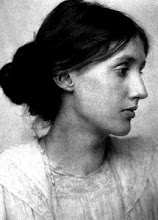題目:The Deafness of Ludwig Van Beethoven:an Immunopathy()著者:Karmody CS, Bachor ES (Department of Otolaryngology, Tufts University School of Medicine, Boston, Massachusetts, USA., and Department of Otolaryngology, Academic Hospital of the University Jena, Germany)出處:Otol Neurotol 2005,26:809-814.內容: 樂聖貝多芬(1770-1827)一生相當体弱多病。在古典記載中貝氏除了聽力、胃腸症狀外,他也有罹患rheumatism, various skin abscesses and recurrent infections, ophthalmia, jaundice及anemia等,最後死於肝硬化及肝衰竭。或許因他是音樂天才的關係,較為人知者乃是從27歲時即困擾著他的聽力障礙,以及後來全聾而完全聽不到自己後期作品(第9號交響曲大合唱)的首演,靠著女低音Karoline Unger提醒他回覆全場觀眾的喝采。過去近200年來,有相當多的文章,包括醫學文獻,在討論貝氏耳聾的成因,其中包括:otosclerosis, syphilis, noise trauma, Paget’s disease,sarcoidosis,以及otitis media等。然而以上這些說法,幾乎都經不起詳細的辯證。1970發表於JAMA的報告,Stevens及Hemenway認為貝氏有otosclerosis,可是otosclerosis常為顯性遺傳,在一個音樂家的家庭可能是嚴重的問題,況且完全是sensorineural type的otosclerosis聽障也很少見。1958年McCabe曾發表congenital syphilis可能是貝氏聽障原因,然而貝氏死後autopsy的結果並未見到此病特殊具有的頭顱骨額部突出,貝氏生前也未見late onset congenital syphilis常有的fluctuating hearing loss 及vertigo。貝氏27歲即有聽障,不像acquired syphilis及老年才發病的Paget’s disease。本文的目的,是在根據貝氏罹患的其他內科方面的疾病,證諸近年來有關的報告,說明貝多芬的耳聾,可能是一個免疫疾病。貝氏30歲左右給他青少年玩伴,當時為波昂大學內科教授的Dr. Franz Gerhard Wegener信中,提到了他當年的老毛病:「經常性的腹絞痛、腹瀉及血便年復一年的加重,〝偶有8-10天的緩解〞。」以目前的知識有三種情況可以解釋,即inflammatory bowel disease (IBD), lead poisoning以及sarcoidosis。鉛中毒(plumbism)可以從頭髮檢驗出來,它會引起腹絞痛,但多發生於小兒。Sarcoidosis可以引起皮膚、肺、肝與顏面神經的病變,但甚少引起胃腸及聽神經病變。關於貝氏的這些腸胃症狀,Larkin在1970年首次發表認為貝氏可能罹患「免疫機能病變」,或許是SLE的文章。Davies (1995),Kubba與Young(1996)認為是IBD的一種,可能是ulcerative colitis或者是Crohn氏病。而ulcerative colitis與Crohn氏病均曾有聽力障礙的零星報告。在1999-2001間的報告,知道IBD是一種免疫疾病且常與其他病變如primary sclerosing cholangitis, ankylosing spondylitis, irritis/uveitis, pyoderma granulosum, erythema nodosum等併存。而後面這些症狀,不少就發生於貝氏身上。由上述諸種記載及推論,著者認為貝氏聽障源於IBD應是最合乎邏輯而漏洞最少的說法。譯註:可惜的是貝氏死後autopsy重點在肝及腹水,對於大腸並未有詳細的觀察,僅僅以〝filled with air〞帶過。Davies是首位提到貝氏的聽障是〝an extra-intestinal manifestation of ulcerative colitis〞的學者(Davies PJ. Ludwig van Beethoven:Une surdite auto-immune?Histoire des Sciences Medicales 1995;29:271-6)。而在此文發表之前後,已經陸續有些報告提出ulcerative colitis與sensorineural hearing loss有關(psychiatry 1972;4:379-87 / J Clin Gastroenterol 1982;4:251-2 / Postgrad Med J 1986;62:753-5 / Arch Otolaryngol 1984;110:810-2 / Am J Gastroenterol 1998;93:2565-7 / Clin Otolaryngol 2000;25:143-5)。本文著者僅是收集資料加入一些辯證,強化Davies的觀點。摘錄者:林凱南題目:Intratemporal Facial Nerve Schwannoma:A Management Dilemma(顳骨內之顏面神經鞘瘤:一個處置上的窘境)著者:Perez R, Chen JM, Nedzelski JM (Department of Otolaryngology, Sunnybrook and Women’s College Health Science Center, and the University of Toronto, Toronto, Ontario, Canada)出處:Otol Neurotol 2005;26:121-126.內容:顳骨內之顏面神經鞘瘤,特別是顏面神經機能正常或輕微的病例,常是治療上的一個難題。由於腫瘤的生長速度極為遲緩,而此種病例接受手術後,其顏面神經的功能變異程度太大,有些專家主張採取保守的處置法,包括定期接受影像學檢查,部份切除,以及除去覆蓋顏面神經外部骨質的解壓手術。手術治療,傳統上需要在切除腫瘤後,縫合神經或移植神經。有少數的報告曾有切除腫瘤但仍保存神經完整的經驗。著者等回溯性的將24個病例(11例接受腫瘤切除但盡量保住神經的手術,13例定期觀察),分別就其手術後或定期影像檢查的長期追踪結果,提出報告。結果顯示:11例接受手術之病人中,有7例保留神經,3例以sural nerve移植,1例直接縫合(primary anastomosis)。3例以sural nerve移植的病人中,1例曾先嘗試用greater auricular nerve移植失敗,另1例後來又接受facial hypoglossal sural nerve interposition procedure。切除腫瘤的方式:5例採合併middle fossa及mastoid進入法,5例採單純mastoid進入,1例採translabyrinthine approach。術後追踪4至19年,平均8年。術後的MRI檢查,至少也有2年。手術11例中,術前8例有程度不一之顏面神經麻痺,6例術後顏面神經功能不變,4例改善,1例變差,均未有腫瘤復發現像。另外,13例定期影像檢查的病例,平均追踪5年(1-8年)。這些未手術之13例中,在起初3例有顏面神經麻痺,在追踪期間有8例神經功能保持不變,5例變差;有4例顯示腫瘤變大,有3例終於接受手術。著者的結論是:手術切除腫瘤而保持顏面神經完整是可能的,術後的結果也不錯。不過由於仍有風險,是否決定手術應取決於1)術前顏面神經功能,2)腫瘤成長速度,3)術者的經驗,4)病人的認知。評論:最近在門診看到一個early case。病人是一位漂亮的未婚女性。她曾在2-3年前發生左側輕微顏面神經麻痺,經藥物治療後完全恢復。但是聽力輕微減退困擾著她,終於ENT醫師們發現她在耳膜後方,靠近中央的地方,有一小塊黃黃的東西。CT及MRI均顯示病變侷限在中耳段。目前病人在定期接受追踪。本文著者敘述他們手術的方法是與acoustic neuroma的intracapsular removal一樣,把tumor內部淘空,但是acoustic neuroma通常也無法保存長出tumor的vestibular nerve,而是要保存旁邊的facial nerve,兩者有很大的不同。另外,參考了幾本耳科手術書,他們的說法是這樣的:Brackmann Shelton and Arriaga:Otological Surgery(1994):For an older patient in poor health who has a small tumor and good facial function, observation may be the best strategy. Younger patients with good facial function may also be followed up, but they must be aware of the possible risk to the ultimate facial nerve outcome and to their hearing if surgery is delayed. Jackler and Driscoll:Tumors of the Ear and Temporal Bone(2000):It has been stated earlier that ”careful dissection” can easily separate neurolemmomas from their major nerves. This has not been our experience, nor does the literature support that the majority of patients can have their FNS resected with preservation of facial nerve continuity and function. Nadol and McKenna:Surgery of the Ear and Temporal Bone(2005):It has been our philosophy to wait until there is evidence of noticeable progression of symptoms but to recommend surgical intervention before residual facial neuronal function drops below 40% on electroneuronography. Because the final recovery is often poorer than the preoperative facial function, the patients need to have a clear understanding of the goals of the proposed surgical procedure and realistic expectations prior to surgery.
摘錄者:林凱南
12/18/2008
貝多芬的耳聾
標籤: About Music
張貼者: Johanne 於 12/18/2008 06:17:00 上午
訂閱:
張貼留言 (Atom)


0 意見:
張貼留言